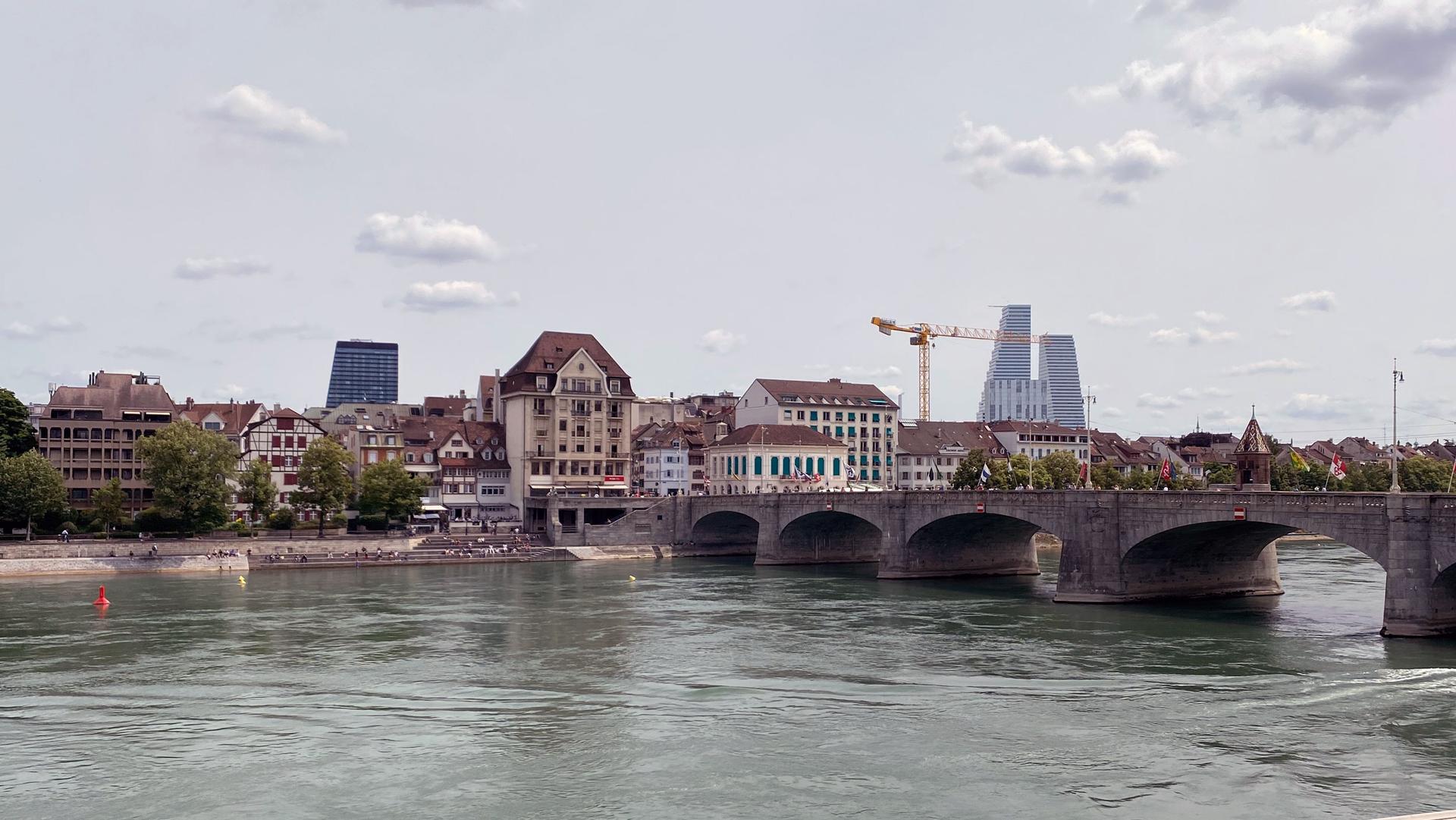Christian Hossli stood above the Rhine River in Basel, Switzerland, at a hydropower facility called Birsfelden.
This is the first barrier that salmon will have to cross when they make their return in a few years.
People can bike across the dam, but fish have to take a different path.
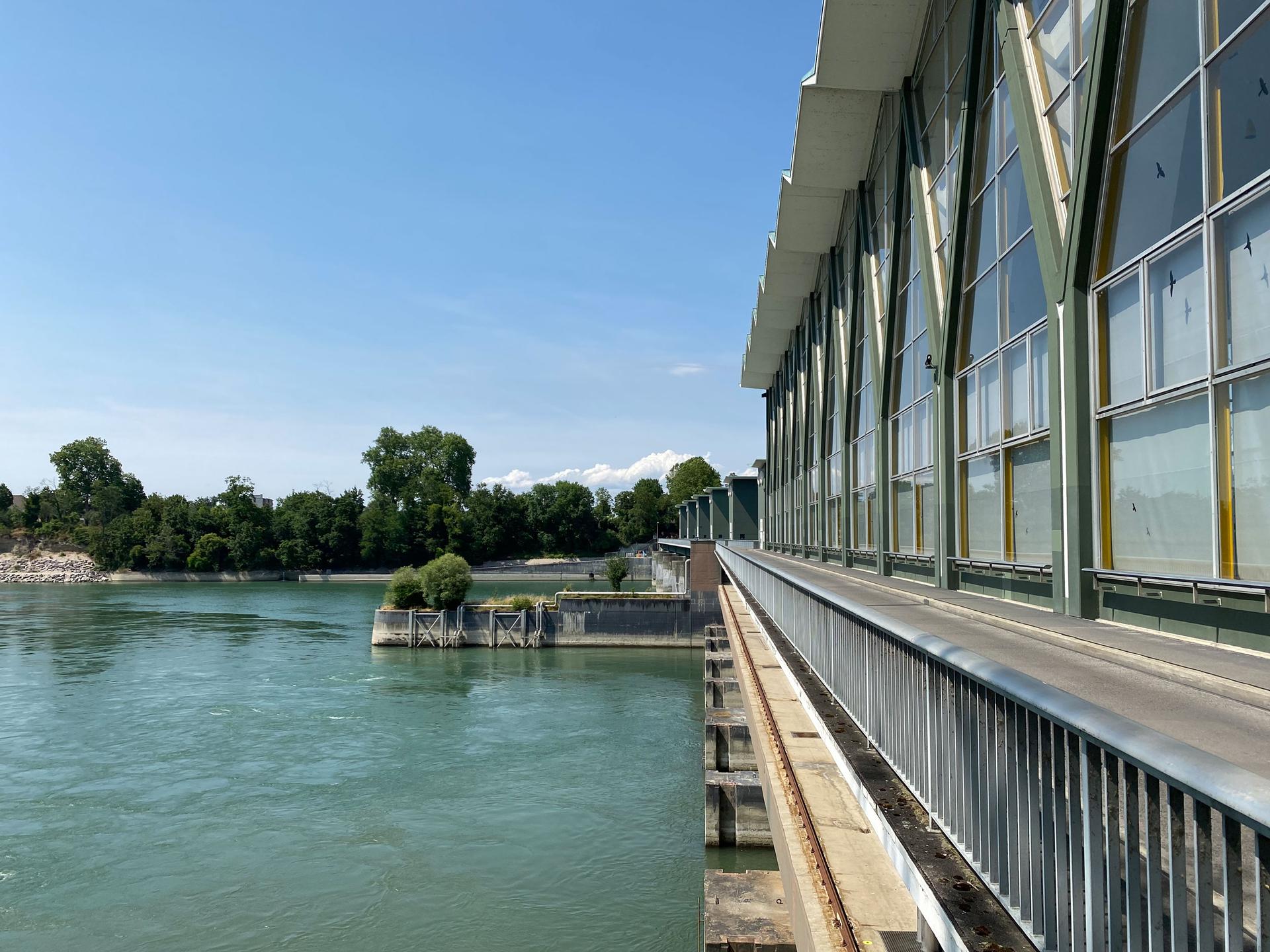
The Rhine River runs north through Central Europe, from Switzerland to the North Sea. A hundred years ago, it was filled with salmon. Then, their migration was blocked by man-made structures built on the river.
Now the nations along the Rhine are attempting to bring salmon back by installing fish ladders.
“A stairway, you could say,” Hossli said.
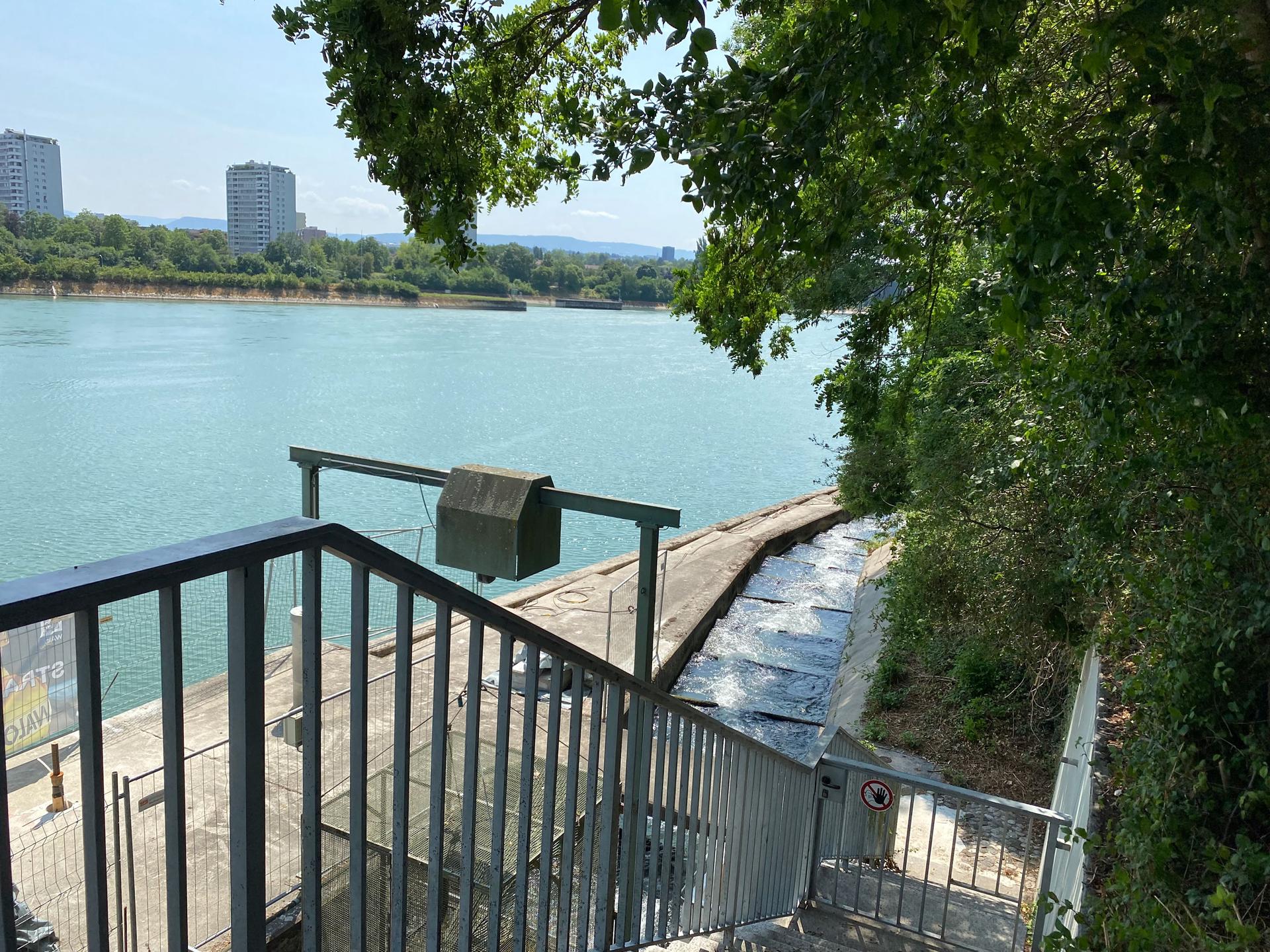
The ladder at Birsfelden is made up of several concrete pools of water, each a few inches higher than the last, with a current flowing through.
“The Rhine on the left side is like, five to 10 meters lower … and this ladder helps the fish to overcome this barrier,” Hossli said.
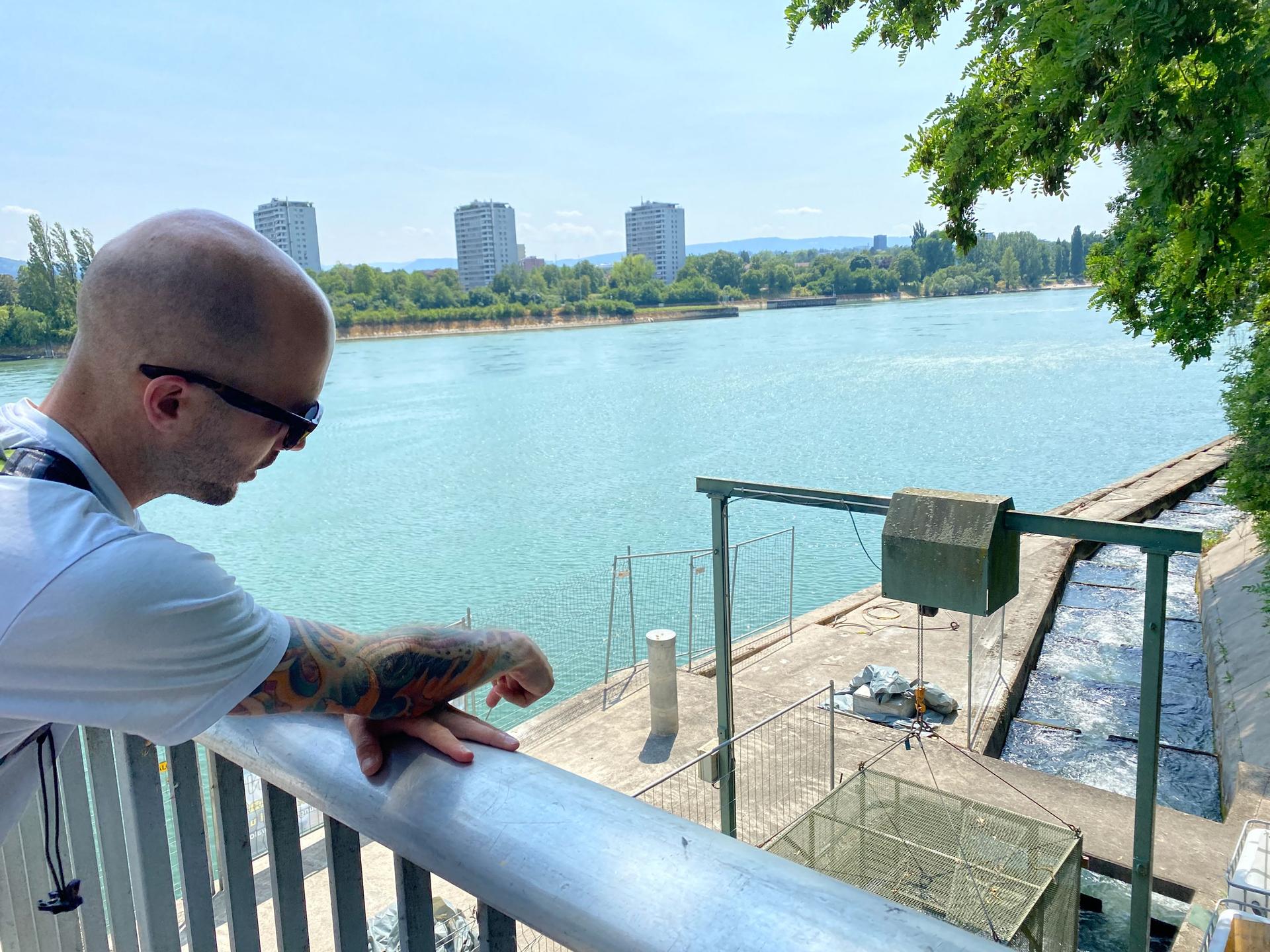
Hossli works for the World Wildlife Fund in Switzerland. His organization is part of the Salmon Comeback initiative, a group of nonprofits and nations working to reconnect the Rhine and restore an old migration route. According to Hossli, hundreds of thousands of salmon once swam up and down the river each year.
“This was the case until 1900 or so,” he said.
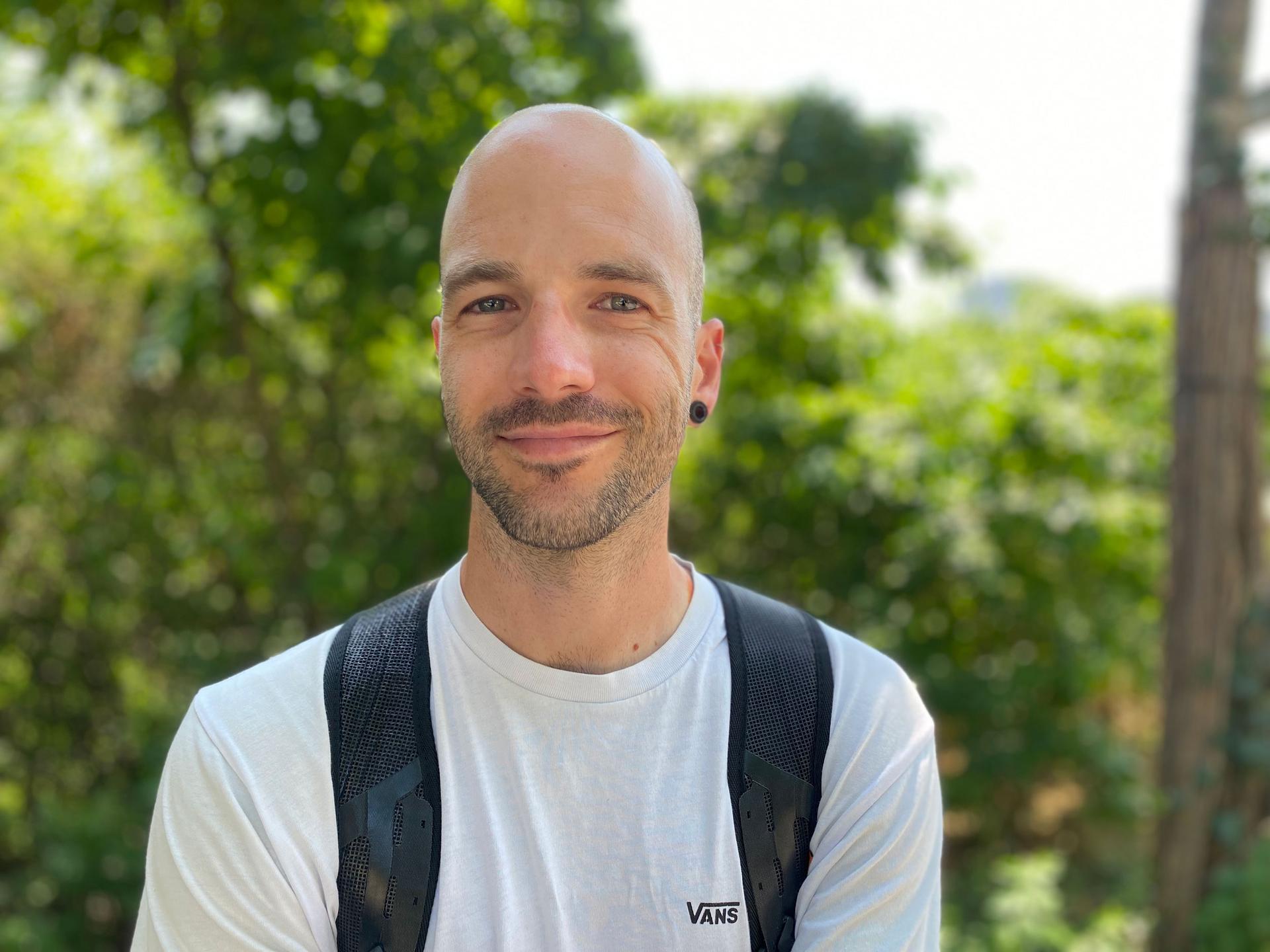
The salmon would swim north with the current, from Basel all the way to the Netherlands and the North Sea. There they’d mature, then swim against the current back to Basel, to spawn. They did this until their route was blocked by hydropower facilities and other barriers.
“In the middle of the last century, salmon got extinct in the Rhine area,” Hossli said.
Salmon are an especially needy fish – meaning they require very particular conditions in their ecosystem. So the theory is, if salmon can thrive here, any fish can.
“If we bring back salmon to our rivers, if he feels well … we can be kind of sure that our river ecosystems are in good shape,” Hossli said.
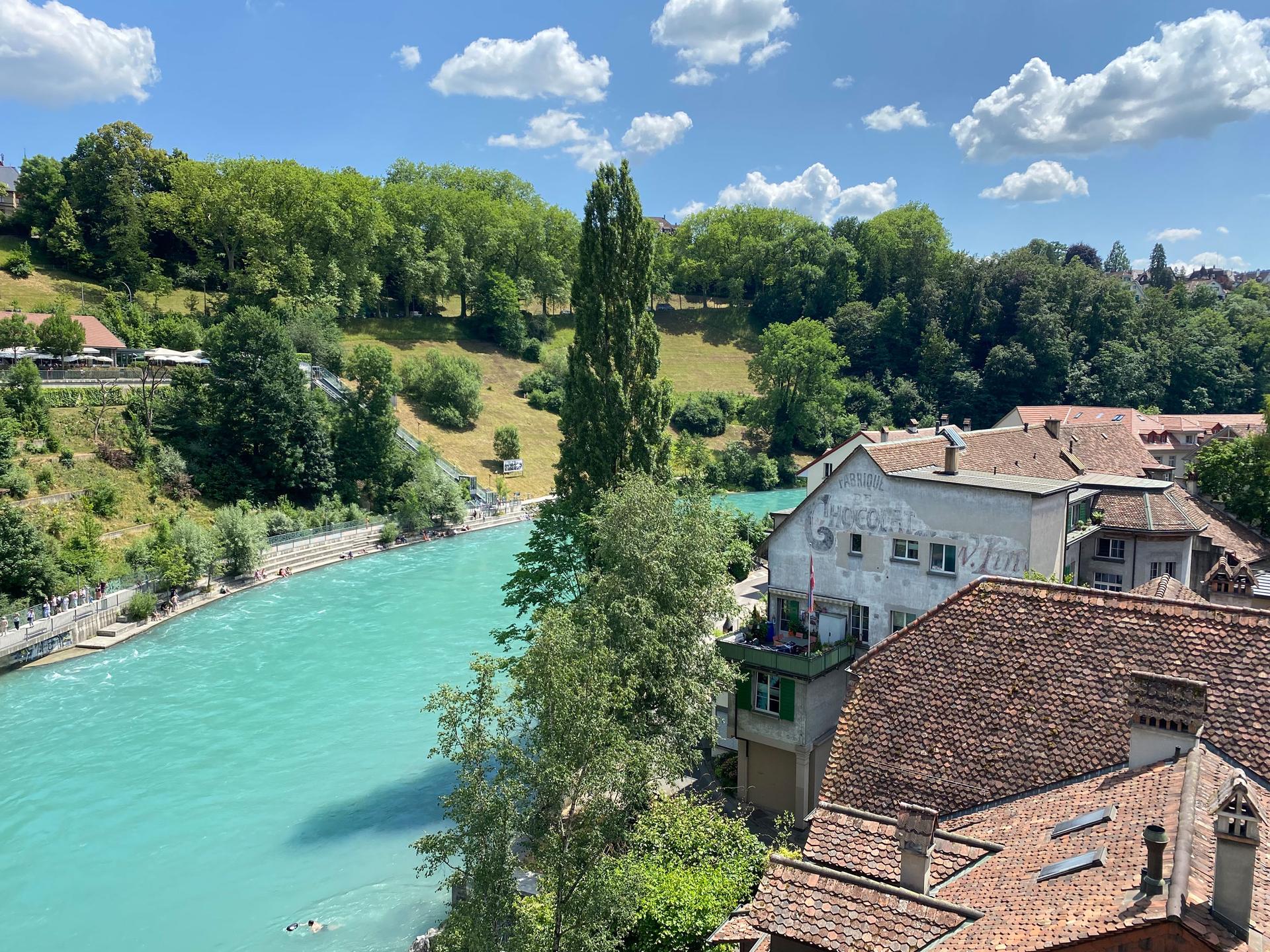
The nations along the Rhine – Germany, France, Switzerland, the Netherlands and Luxembourg – have agreed that the river should be reconnected by 2027. That’s a new goal, after a 2020 deadline came and went. A lot of work has been done, but there’s one sticking point: the Vogelgrun hydropower facility about 37 miles north of Basel.
“The Vogelgrun case is maybe the most difficult obstacle,” said Roberto Epple, president of the nonprofit European Rivers Network.
Epple said Vogelgrun is a tough spot because it’s where the old Rhine joins the Canal d’Alsace, a man-made channel running parallel to the Rhine.
A couple of solutions have been proposed to get the salmon through, like sending them under the dam — or over. Both ideas would cost between $86 to $108 million, Epple said.
Epple said another idea, to bring the salmon across in a boat, just isn’t feasible.
The French-owned power company EDF owns the facility at Vogelgrun. In 10 years, there’s been no agreement on a solution. Now, Epple and his colleagues have a new idea. They want to follow the flow of the water.
“Ninety percent of the water comes through the channel, and salmon are following the current,” Epple said.
Instead of using the old Rhine, Epple and others in the Salmon Comeback coalition think that fish ladders should be placed on the larger Alsace channel. They say that’s where most of the fish are likely to go, anyway.
“This proposal we have is cheaper and much more efficient,” Epple said.
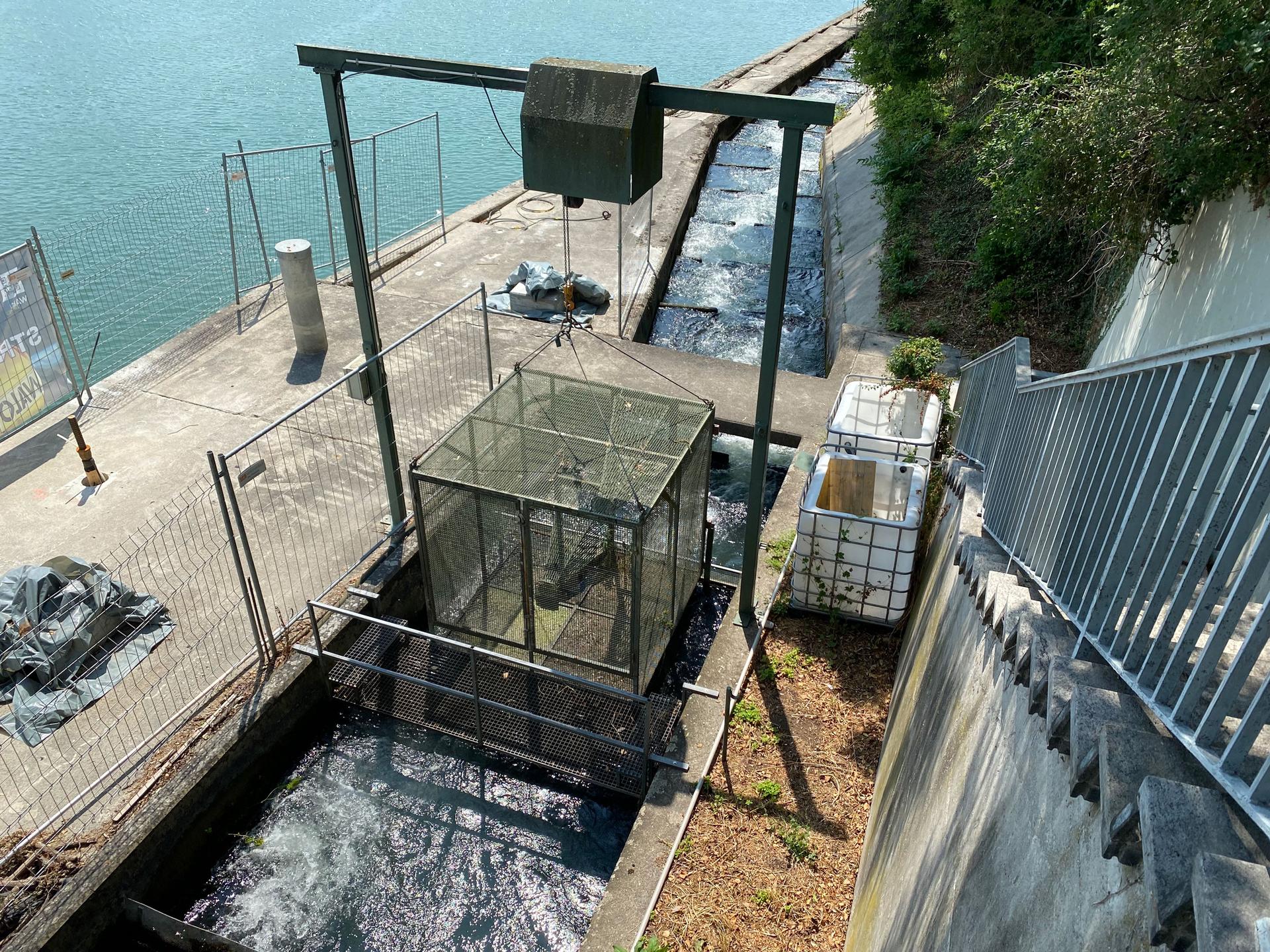
Last fall, EDF started construction on two other fish ladders north of Vogelgrun, at Rhinau and Marckolsheim. EDF declined an interview request, but on their website, they said that the project is funded by France Relance, a COVID-19 recovery package from the government.
Now, Epple and Christian Hossli both believe it’s up to EDF to pay for Vogelgrun.
“The owner took quite a big profit out of this power plant during the last 100 years,” Hossli said. “So it would be kind of fair.”
In Basel, Hossli said the government is already reintroducing the Atlantic salmon that once lived in Swiss waters. But he said that work, and the work of the other Rhine nations, will be wasted if the fish can’t get through Vogelgrun.
“If you just connect two-thirds of the last remaining stretch, it would be kind of nonsense,” he said.
Hossli said he hopes all the different stakeholders can find a solution to connect the final piece of the Rhine and bring the salmon back home.
